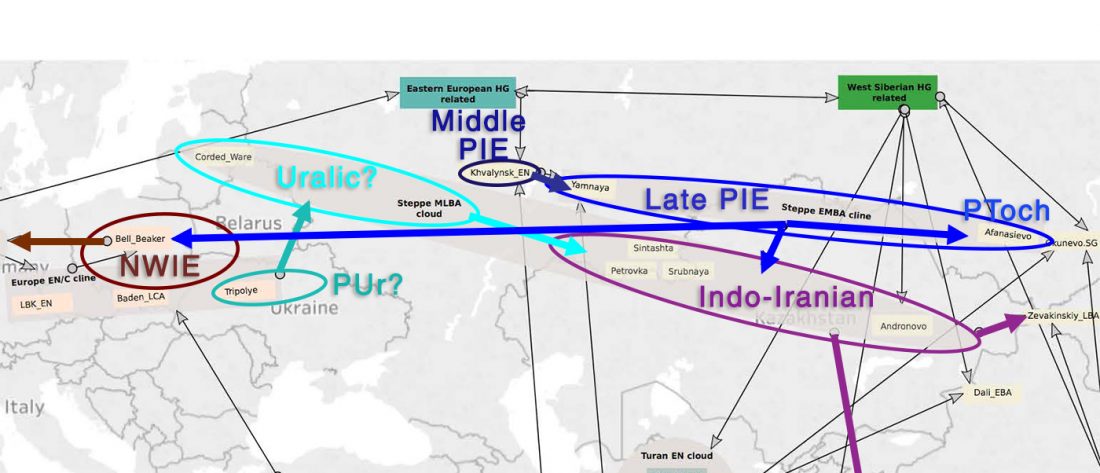Preprint of a review by Iosif Lazaridis, The evolutionary history of human populations in Europe.
Interesting excerpts:
… Read the rest “Lazaridis’ evolutionary history of human populations in Europe”Steppe populations during the Eneolithic to Bronze Age were a mix of at least two elements[28], the EHG who lived in eastern Europe ~8kya and a southern population element related to present-day Armenians[28], and ancient Caucasus hunter-gatherers[22], and farmers from Iran[24]. Steppe migrants made a massive impact in Central and Northern Europe post- 5kya[28,43]. Some of them expanded eastward, founding the Afanasievo culture[43] and also eventually reached India[24]. These expansions are probable vectors for the spread of Late Proto-Indo-European[44] languages

